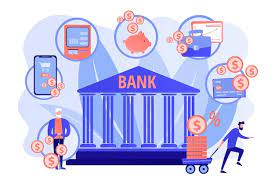
In India, there are several types of bank accounts, each designed to
cater to the diverse financial needs of individuals and businesses. The common
types of bank accounts in India include:
- Savings Account:
- A
basic account meant for regular savings. It usually offers interest on
the deposited amount and provides facilities like check books, ATM cards
Mobile Banking and Internet Banking.
- Current Account:
- Primarily
for business owners and companies, a current account is used for regular
business transactions. It typically doesn't offer interest but provides
facilities like overdraft and higher withdrawal limits.
- Fixed Deposit Account:
- In
this account, the account holder deposits a lump sum amount for a fixed
period, and in return, they receive a fixed interest rate. The funds are
locked in for the agreed-upon tenure.
- Recurring Deposit Account:
- Similar
to a fixed deposit, but instead of a lump sum amount, the account holder
makes regular monthly deposits. At the end of the term, they receive the
principal amount along with interest.
- Senior Citizens Savings Scheme (SCSS):
- Specifically
designed for senior citizens, this scheme provides a higher interest rate
than regular savings accounts. The tenure is usually five years, and it
can be extended once for an additional three years.
- Public Provident Fund (PPF) Account:
- A
long-term savings scheme with a lock-in period of 15 years. PPF accounts
offer tax benefits and competitive interest rates. The account can be
extended in blocks of five years.
- Employee Provident Fund (EPF) Account:
- This
account is linked to an individual's employment and is managed by the
Employees' Provident Fund Organization (EPFO). Both employees and
employers contribute to this fund.
- NRI (Non-Resident Indian) Accounts:
- These
accounts cater to the financial needs of Non-Resident Indians. Types
include NRE (Non-Resident External) accounts, NRO (Non-Resident Ordinary)
accounts, and FCNR (Foreign Currency Non-Resident) accounts.
- Demat Account:
- Used
for holding securities in electronic form, a Demat account is essential
for trading and investing in the stock market.
- Salary Account:
- Provided
by employers to facilitate salary payments to their employees. These
accounts often come with benefits such as zero-balance requirements,
special debit cards, and overdraft facilities.
- Joint Account:
- An
account shared by two or more individuals. It can be a joint savings
account, joint current account, or joint fixed deposit account.
- Small Savings Schemes:
·
Various
small savings schemes offered by post offices and banks, such as the Kisan
Vikas Patra (KVP) and Monthly Income Scheme (MIS).
The accounts written above are mainly deposit accounts, where some specified
interest rates are paid by bank.
There is some another account called loan account which are as follows:
1.
Cash Credit (CC)
2.
Overdraft (OD)
CC (Cash Credit) and OD (Overdraft) accounts are types of
lending facilities provided by banks, primarily for business entities. Let's
understand each one:
1.
Cash Credit (CC)
Account:
·
A Cash Credit
account is a type of loan account provided to businesses to meet their working
capital needs. It allows the account holder to withdraw funds up to a specified
limit, which is determined based on the borrower's creditworthiness and the
business's financial health. Interest is charged only on the amount withdrawn,
and the account can be continuously used if the borrower repays and maintains
the credit limit.
·
CC accounts are
often used by businesses to manage fluctuations in cash flow, fund day-to-day
operations, and take advantage of business opportunities.
2.
Overdraft (OD)
Account:
·
An Overdraft account
is a credit facility that allows the account holder to withdraw more money than
what is actually available in their account, up to a specified overdraft limit.
Interest is charged only on the amount overdrawn. Overdrafts are generally
granted for a short term, and the borrower needs to repay the overdrawn amount
within a specified period.
·
OD accounts are
often used to address temporary cash shortages, and they provide flexibility to
account holders to manage their finances more effectively.
Both CC and OD accounts are financial products that
provide flexibility in terms of fund utilization, especially for businesses
facing fluctuating cash flows. These accounts are typically associated with
current accounts and are considered working capital financing tools.
It's important to note that while CC and OD accounts
offer flexibility, they also involve the payment of interest on the borrowed
amount. The terms and conditions, including interest rates and repayment terms,
can vary among different banks. Businesses should carefully consider their
financial needs and obligations before opting for these types of credit
facilities.
